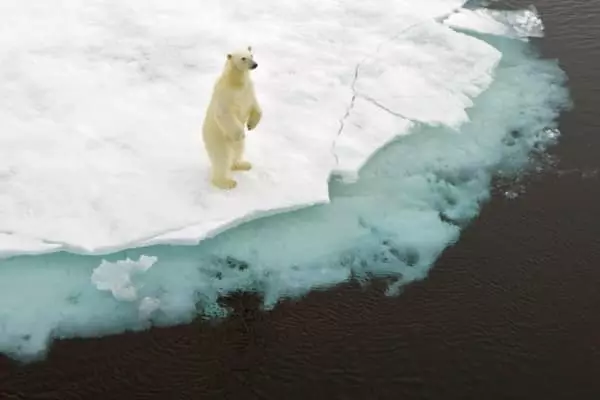Polar bears in the Beaufort Sea have had to travel far outside of their traditional arctic hunting grounds in recent years, contributing to a nearly 30% decrease in their population. According to a recent study, the bears’ home range, or the amount of space they require for food and other resources, was approximately 64% larger from 1999 to 2016 than it was from 1986 to 1998.
“Having to travel farther means these bears are expending more energy, which can threaten their survival,” said Anthony Pagano, the study’s lead author and a postdoctoral researcher at Washington State University’s School of the Environment. “If we want to preserve the habitat of these incredible mammals, we must address the root cause of the problem, which is slowing global climate change.”
Pagano and colleagues from the US Geological Survey used satellite tracking data to analyze the movement patterns of female polar bears in the Beaufort Sea area north of Alaska from 1986 to 2016. Their research revealed that polar bears have had to travel farther north of their traditional hunting grounds on the continental shelf in order to stay on their receding sea ice habitat over the last two decades.
Having to travel farther means these bears are expending more energy, which can threaten their survival. If we want to preserve the habitat of these incredible mammals, we must address the root cause of the problem, which is slowing global climate change.
Anthony Pagano
The continental shelf, which stretches around 100 miles north of Alaska and Canada, is a shallow water habitat with plenty of fish for the bears’ favorite prey, seals. Polar bears will frequently double their body weight by eating fatty meat during the early summer when seals are weaning their pups and are most vulnerable to attack.
According to the researchers’ data, as the sea ice on the continental shelf continues to recede earlier and further, the bears are being displaced from this primary foraging habitat and moving further north into deeper waters with fewer seals to prey on.

“The cumulative impact of having to move farther and farther north with the ice in the summer and then having to move back in the fall and winter as the ice freezes are taking a significant toll,” Pagano said. “Our findings highlight the troubling impact of sea ice loss on polar bear movement patterns.”
Another intriguing finding of the study is that approximately 20% of the polar bear population in the Beaufort Sea foregoes their traditional sea ice hunting grounds entirely in the summer and fall. These bears are migrating inland along the Alaskan and Canadian coasts in search of food, such as carrion, berries, and occasionally bowhead whale carcasses left on the beach by indigenous residents who hunt the large aquatic mammals.
“Sometimes, you’ll have 50 to 100 polar bears congregating around these whale carcasses, competing for food,” Pagano said. “I suspect that as more bears move onto land, there will be a lot more competition for these food resources, and we’ll probably start seeing further decreases in abundance and survival.”
Moving forward, Pagano and his colleagues at the US Geological Survey intend to conduct additional research on polar bears migrating inland in order to better understand how they are adapting to their new terrestrial habitat.
He believes that the best thing humans can do to help preserve the 800 or so remaining polar bears in the southern Beaufort Sea is to focus on reducing global carbon emissions, which are the primary cause of receding Arctic sea ice.
Recent modeling work has shown that enacting regulations to reduce these emissions in order to avoid global warming of more than 2°C (3.6°F), could drastically slow the decline of polar bear habitat in the arctic, thereby assisting these animals in survival.
“It’s a surreal experience to come across a polar bear while flying over the Arctic in a helicopter,” Pagano said. “They are enormously large and impressive. It’s incredible to see this animal that has evolved to be so uniquely adapted to life in this harsh arctic environment. They are well worth the effort required to preserve them.”
















